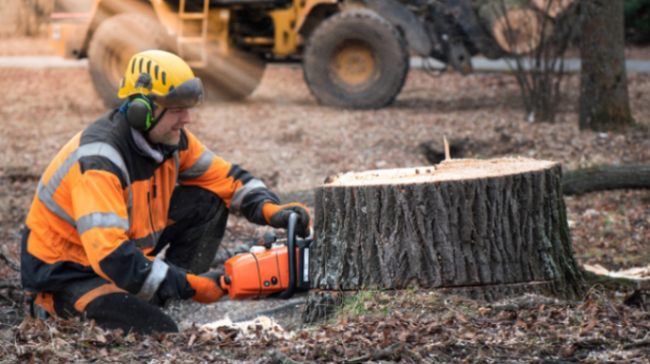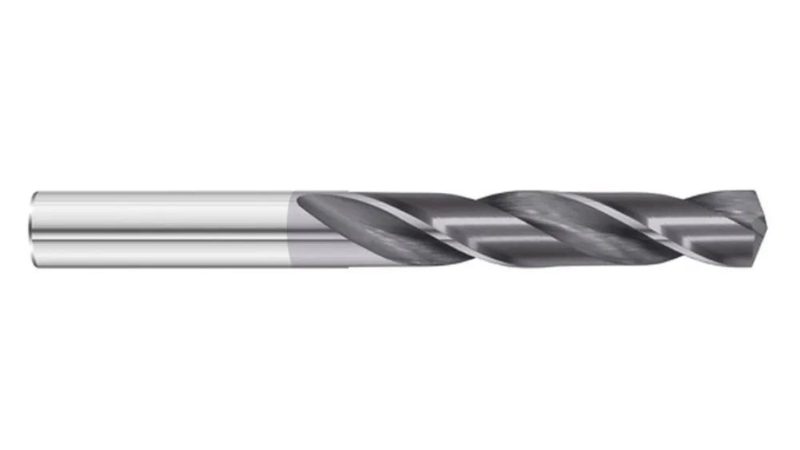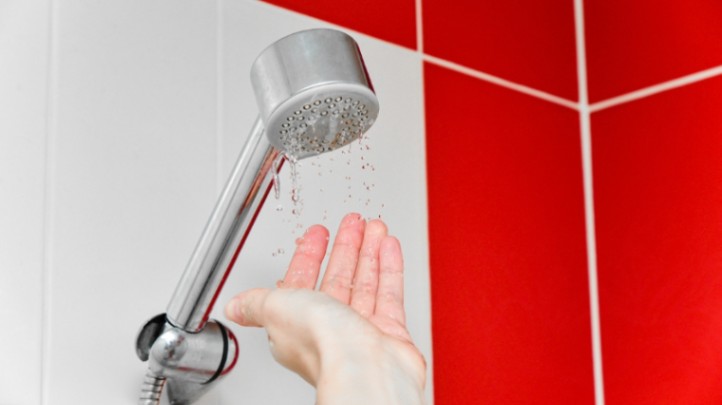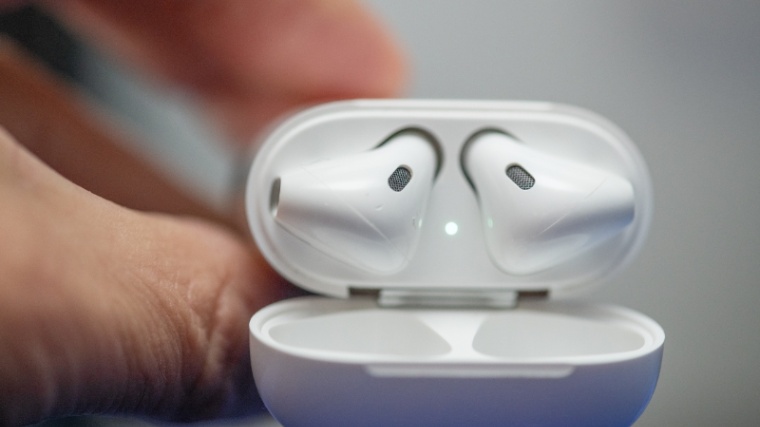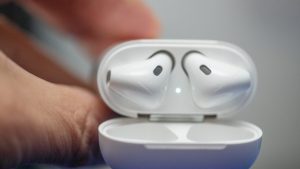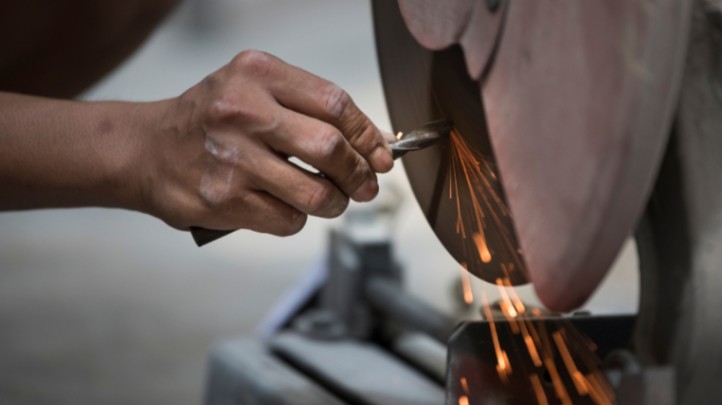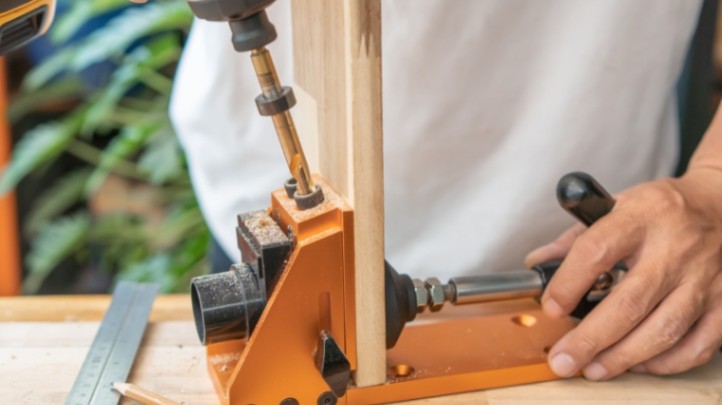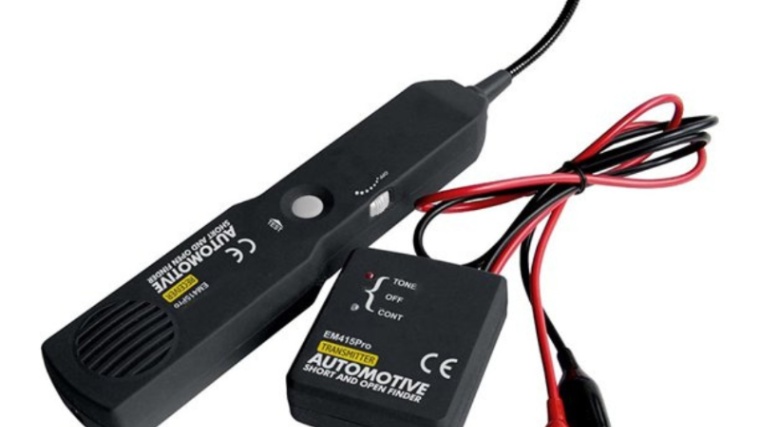Self-centering drill bits are essential in any DIY enthusiast or professional’s toolbox. They are designed to ensure that a hole is drilled precisely where intended, precisely and accurately. Self-centering drill bits can be used on various materials, including wood, plastic, and metals.
This article will discuss the different types of self-centering drill bits, their advantages, and disadvantages, and provide tips and guidelines for using and maintaining them. By the end of this article, you will understand the importance of using a self-centering drill bit and be equipped with the knowledge to use one effectively.
Types of Self-Centering Drill Bits
Drilling is a common task in woodworking, metalworking, and DIY projects. A self-centering drill bit is a tool that makes drilling easier and more accurate. These drill bits have a centering feature that guides the bit to the center of the hole. This ensures the hole is drilled correctly and prevents the bit from wandering. Here will discuss the three self-centering drill bits: brad-point, V-point, and combination.
1. Brad-point Self-centering Drill Bits
Brad-point self-centering drill bits have a sharp point and two spurs that cut clean, straight holes. The spurs cut the wood fibers while the point guides the bit to the center of the hole. Brad-point bits are ideal for drilling small holes in wood, plastic, and other soft materials. They leave a clean, sharp edge and are less likely to cause splintering.
Pros:
- Ideal for drilling small holes
- Clean, sharp edge
- Less likely to cause splintering
Cons:
- Not suitable for drilling large holes
- They can be brittle and break easily
2. V-point Self-centering Drill Bits
V-point self-centering drill bits have a sharp point and a V-shaped groove that guides the bit to the center of the hole. They are similar to brad-point bits but have a wider cutting edge. V-point bits are ideal for drilling holes in metal, plastic, and other hard materials. They can also be used for woodworking but are less effective than brad-point bits.
Pros:
- Ideal for drilling holes in metal and hard materials
- Wider cutting edge
Cons:
- Not as effective as brad-point bits for woodworking
- They can be brittle and break easily
3. Combination Self-centering Drill Bits
Combination self-centering drill bits have a center point and two cutting edges. They can drill small and large holes in wood, metal, plastic, and other materials. The center point guides the bit to the center of the hole, while the cutting edges remove material from the sides. Combination bits are versatile and can replace multiple drill bits in your toolbox.
Pros:
- Versatile
- It can be used for drilling both small and large holes
- You can replace multiple drill bits in your toolbox
Cons:
- Not as effective as specialized drill bits for specific materials
- It can be more expensive than other drill bits
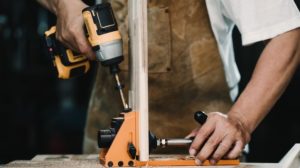
Factors to Consider Before Using a Self-Centering Drill Bit
Before using a self-centering drill bit, it is essential to consider several factors to ensure the success of your project. These factors include the type of material to be drilled, desired depth of the hole, the size of the hole needed, and the drill bit speed.
Type of Material to be Drilled
Different materials require different types of drill bits. For example, wood requires a brad-point self-centering drill bit, while metal and plastic require a V-point self-centering drill bit. A combination self-centering drill bit may be more suitable if you are working with multiple materials.
Desired Depth of the Hole
The depth of the hole needed will determine the length of the drill bit required. Selecting a drill bit that is long enough to drill the desired depth without causing damage to the material or the drill bit is essential.
Size of the Hole Needed
The size of the hole needed will determine the diameter of the drill bit required. It is essential to select a drill bit that is the right size for the hole to ensure accuracy and prevent damage to the material.
Drill Bit Speed
The speed of the drill bit should match the type of material being drilled. For example, softer materials require a slower drill bit speed, while harder materials require a faster drill bit speed. Using the wrong speed can cause damage to the material or the drill bit.
By considering these factors before using a self-centering drill bit, you can ensure that your project is successful and that your holes are drilled accurately and cleanly.
Steps for Using a Self-Centering Drill Bit
Using a self-centering drill bit is a simple process that can help you create accurate and clean holes in your materials. Follow these steps to use a self-centering drill bit:
Determine the Size of the Hole Needed
Before starting, determine the size of the hole you need to drill. This will help you select the appropriate self-centering drill bit.
Attach the Self-Centering Drill Bit to the Drill
Attach the self-centering drill bit to the drill according to the manufacturer’s instructions. Make sure it is securely fastened.
Adjust the Depth Stop on the Drill to the Desired Depth
If your drill has a depth stop, adjust it to the desired depth of the hole to ensure consistent depth for multiple holes.
Place the Drill Bit at the Center of the Material to be Drilled
Place the drill bit at the center of the material to be drilled. The self-centering feature will help keep the drill bit centered and prevent it from wandering or slipping.
Apply Steady Pressure and Drill into the Material
Turn on the drill and apply steady pressure to the material. The self-centering feature will help guide the drill bit through the material and prevent it from wandering. Drill the hole at the desired speed until you reach the desired depth.
Release the Pressure and Remove the Drill Bit
Once you have drilled the hole to the desired depth, release the pressure on the drill and remove the drill bit from the material. Clean the hole and the drill bit before using it for the next hole.
Following these steps, you can use a self-centering drill bit to create accurate and clean holes in your materials.
Tips for Using a Self-Centering Drill Bit
To get the most out of your self-centering drill bit, here are some tips to keep in mind:
Use a Pilot Hole for Harder Materials
For more rigid materials like metal or hardwood, it can be helpful to create a pilot hole before using a self-centering drill bit. This will help guide the drill bit and reduce the risk of it wandering or slipping.
Avoid Applying Too Much Pressure
While applying some pressure to the drill is essential, it’s important to avoid applying too much pressure. This can cause the drill bit to break or cause the material to crack or splinter. Instead, apply consistent, steady pressure.
Use a Drill Press for Precision Drilling
For precision drilling, consider using a drill press. This will help you achieve accurate and consistent holes. A drill press can also be helpful when working with more rigid materials.
Use a Lubricant to Reduce Friction and Extend the Life of the Drill Bit
Using a lubricant like oil or wax can help reduce friction and extend the life of your self-centering drill bit. Apply the lubricant to the drill bit’s tip before starting to drill.
By following these tips, you can ensure that you are using your self-centering drill bit effectively and safely.
Common Mistakes to Avoid
Several common mistakes can be easily avoided with proper technique and preparation when using a self-centering drill bit. Here are a few mistakes to watch out for:
Starting the Drill at an Angle
One common mistake when using a self-centering drill bit is starting the drill at an angle. This can cause the drill bit to wander off course, resulting in an inaccurate or uneven hole. To avoid this, ensure the drill is perpendicular to the material’s surface before drilling.
Not Using a Pilot Hole When Necessary
As mentioned earlier, using a pilot hole can be helpful when drilling into more rigid materials. Failing to create a pilot hole when necessary can cause the drill bit to slip or break or cause the material to splinter or crack. Continually assess the material you are drilling into and determine if a pilot hole is needed.
Using the Wrong Size Drill Bit for the Job
Using the wrong size drill bit can lead to problems like a hole that is too small or too large or a drill bit that breaks or becomes damaged. Before starting a job, ensure you have the correct size drill bit for the hole you must create.
Using a Damaged Drill Bit
Using a damaged or worn-out drill bit can cause problems like inaccurate holes or drill bits that break or become stuck in the material. Inspect your drill bits regularly and replace any that show signs of damage or wear.
By avoiding these common mistakes, you can ensure that you are using your self-centering drill bit safely and effectively.
Maintaining a Self-Centering Drill Bit
Proper maintenance of your self-centering drill bit is essential to ensure its longevity and effectiveness. Here are some tips for maintaining your drill bit:
Cleaning the Drill Bit After Use
After using a self-centering drill bit, it’s essential to clean it properly to remove any debris or residue that may have accumulated. Use a soft cloth or brush to wipe away dirt or dust, and use a mild cleaner or solvent to remove any stubborn grime. Be sure to dry the drill bit thoroughly before storing it.
Sharpening the Drill Bit When Necessary
Over time, your self-centering drill bit may become dull or worn, making it less effective or unusable. To sharpen the drill bit, use a sharpening stone or file to remove any nicks or imperfections from the cutting edge carefully. Follow the manufacturer’s instructions for sharpening, and don’t over-sharpen the bit.
Proper Storage of the Drill Bit to Prevent Damage
When not in use, storing your self-centering drill bit properly is essential to prevent damage or wear. Keep the drill bit in a dry, cool place to prevent rusting, and store it in a protective case or pouch to prevent it from coming into contact with other tools or materials that may cause damage.
Following these maintenance tips ensures that your self-centering drill bit remains in good condition and performs effectively for years.
Advantages &Disadvantages of Using a Self-Centering Drill Bit
Advantages
Using a self-centering drill bit offers several advantages over traditional drill bits. Here are some of the key benefits:
- Saves Time and Effort in Centering the Hole
One of the primary advantages of using a self-centering drill bit is that it eliminates the need for manual hole centering. This saves time and effort, especially when drilling multiple holes in a row. With a self-centering drill bit, you can place the bit at the desired location, apply pressure, and begin drilling.
- Provides Precise and Accurate Drilling
Self-centering drill bits are designed to provide precise and accurate drilling, even in difficult or hard-to-reach areas. The bit automatically centers itself in the material, ensuring the hole is drilled at the correct angle and depth. This can be especially important in applications where precision is crucial, such as woodworking or metalworking.
- Reduces the Risk of the Drill Bit Slipping and Causing Damage
Another advantage of using a self-centering drill bit is that it reduces the risk of the bit slipping and causing damage to the material or surrounding area. The bit is designed to grip the material firmly and prevent it from moving, even as you apply pressure and begin drilling. This can help to prevent accidents and ensure that your drilling is accurate and safe.
Using a self-centering drill bit can make your drilling tasks easier, faster, and more accurate. Whether you’re a professional tradesperson or a DIY enthusiast, a self-centering drill bit is valuable in your toolbox.
Disadvantages
While self-centering drill bits offer many advantages, limitations and potential disadvantages exist. Here are a couple of drawbacks to using a self-centering drill bit:
- Limited to Drilling Small to Medium-Sized Holes
Self-centering drill bits are typically designed for drilling smaller to medium-sized holes, up to around 1/2 inch in diameter. If you need to drill larger holes, you may need to use a different drill bit or tool. However, a self-centering drill bit is more than sufficient for many applications, such as drilling pilot holes or installing hardware.
- May Not Work Well with Certain Materials such as Metal or Glass
While self-centering drill bits can work well with many materials, such as wood or plastic, they may be less effective with specific more complex, or more brittle materials, such as metal or glass. In these cases, you may need to use a different drill bit or tool or take extra precautions to avoid damaging the material.
While there are some limitations to using a self-centering drill bit, they remain a valuable and versatile tool for many drilling tasks. By understanding their strengths and weaknesses, you can decide whether a self-centering drill bit is a suitable tool for your next project.
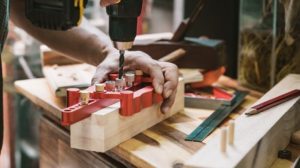
When to Use a Self-Centering Drill Bit
Self-centering drill bits are versatile and valuable tools for various projects that require precise and accurate drilling. Here are a few situations where using a self-centering drill bit can be particularly advantageous:
Woodworking Projects
Self-centering drill bits are a popular choice for woodworking projects, as they make it easy to create clean and accurate holes without additional marking or centering. They are often used to drill pilot holes for screws, create dowel holes, or install hardware.
DIY Home Improvement Projects
Self-centering drill bits are also valuable for many DIY home improvement projects, such as installing shelves, cabinets, or other fixtures. They can help you create precise holes quickly and easily without requiring specialized tools or expertise.
Any Job that Requires Precise and Accurate Drilling
Finally, self-centering drill bits can be a valuable tool for any job that requires precise and accurate drilling, regardless of the specific project. They can save time and effort, reduce the risk of mistakes or damage, and help ensure that your work meets your desired specifications.
Whether you are a professional woodworker, a DIY enthusiast, or need to tackle a few home improvement tasks, a self-centering drill bit can be a valuable addition to your toolkit. You can achieve accurate and precise results with minimal effort by choosing the right drill bit for the job and using it correctly.
FAQs
- Can a self-centering drill bit be used for drilling metal?
It depends on the type of self-centering drill bit and the metal’s hardness. Brad-point self-centering drill bits work well with softer metals such as aluminum or brass but may not be suitable for drilling harder metals like steel. V-point self-centering and combination self-centering drill bits are more suitable for drilling harder metals.
- How often should I sharpen my self-centering drill bit?
The frequency of sharpening your self-centering drill bit depends on how often you use it and the material you are drilling. Generally, it would be best to sharpen your drill bit when you notice a decrease in performance or when it becomes difficult to drill through the material.
- Can I use a self-centering drill bit for drilling holes larger than 1 inch in diameter?
Self-centering drill bits are generally limited to drilling small to medium-sized holes, typically up to 1 inch in diameter. For larger holes, it is recommended to use a hole saw or a specialized bit designed for larger diameter holes.
- Can a self-centering drill bit be used with a cordless drill?
Yes, a self-centering drill bit can be used with a cordless drill as long as the drill’s chuck size matches the drill bit’s shank size.
- How do I know if my self-centering drill bit is damaged and needs to be replaced?
Signs that your self-centering drill bit may be damaged and needs to be replaced include dullness or bluntness of the bit, difficulty in drilling through the material, and visible wear or damage to the bit’s cutting edge. It is essential to regularly inspect your drill bit for signs of damage and replace it as necessary to ensure optimal performance and safety.
Conclusion
Using a self-centering drill bit can greatly benefit anyone who needs to drill precise and accurate holes quickly and efficiently. Following the simple steps outlined in this article, anyone can easily use a self-centering drill bit for their woodworking or DIY projects.
It is important to remember to choose the right type of self-centering drill bit for the job, consider the factors before using it, and maintain the drill bit properly. By avoiding common mistakes and following the tips provided, users can ensure a long lifespan for their self-centering drill bit and accurate, efficient project results.
You may also like these posts!
